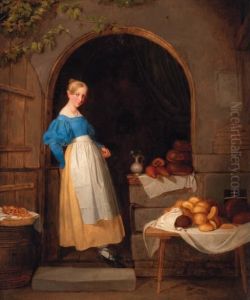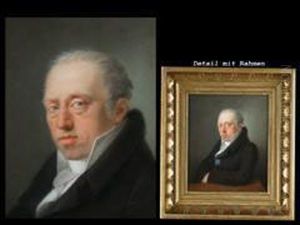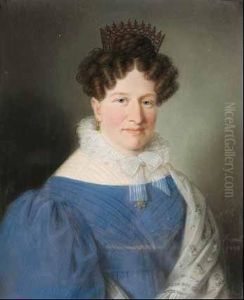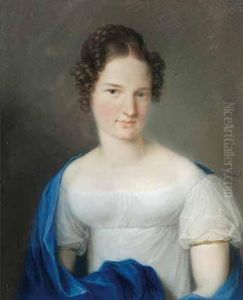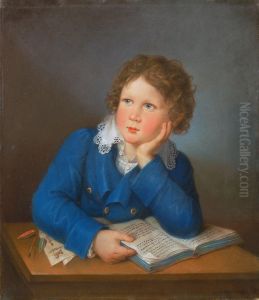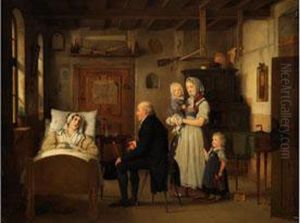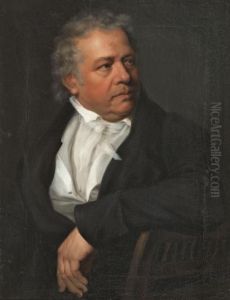Johann Fr. Karl Kreul Paintings
Johann Friedrich Carl Kreul, often referred to as Johann Fr. Karl Kreul, was a notable German painter born on September 5, 1804, in Wunsiedel, Bavaria. Coming into prominence in the 19th century, Kreul was particularly celebrated for his contributions to portrait painting, capturing the likenesses of the bourgeoisie, nobility, and intellectual elites of his time with a distinctive elegance and accuracy. His work is characterized by its meticulous detail, vibrant colors, and the capacity to capture not just the physical appearance but the personality and essence of his subjects.
Kreul received his initial artistic training in Nuremberg, a city with a rich artistic heritage that undoubtedly influenced his development as a painter. He honed his skills under the tutelage of established artists, immersing himself in the study of fine arts, which was to lay the groundwork for his future career. His talent and dedication to his craft soon saw him moving beyond the confines of Nuremberg to seek wider recognition and opportunities, which he found in various German states and beyond.
Throughout his career, Kreul's work was widely appreciated for its artistic merit and technical proficiency. He became a sought-after portraitist, with his services in high demand among the social elite. Despite the popularity of photography rising during his lifetime, Kreul's ability to imbue his portraits with a depth of character and a palpable sense of presence ensured his continued relevance and success.
Aside from his portraits, Kreul also engaged in religious and historical paintings, though these are less well-known today. His contributions to art were not limited to his paintings alone; he was also involved in the artistic community as a teacher, sharing his knowledge and skills with the next generation of artists, thereby influencing the course of German art.
Johann Friedrich Carl Kreul passed away on August 17, 1867, in Nuremberg. His legacy lives on through his portraits, which continue to be admired for their beauty, skill, and the window they offer into the 19th-century society. Kreul's work remains a significant part of German art history, encapsulating the stylistic transitions of his time and the enduring appeal of classical portraiture.
